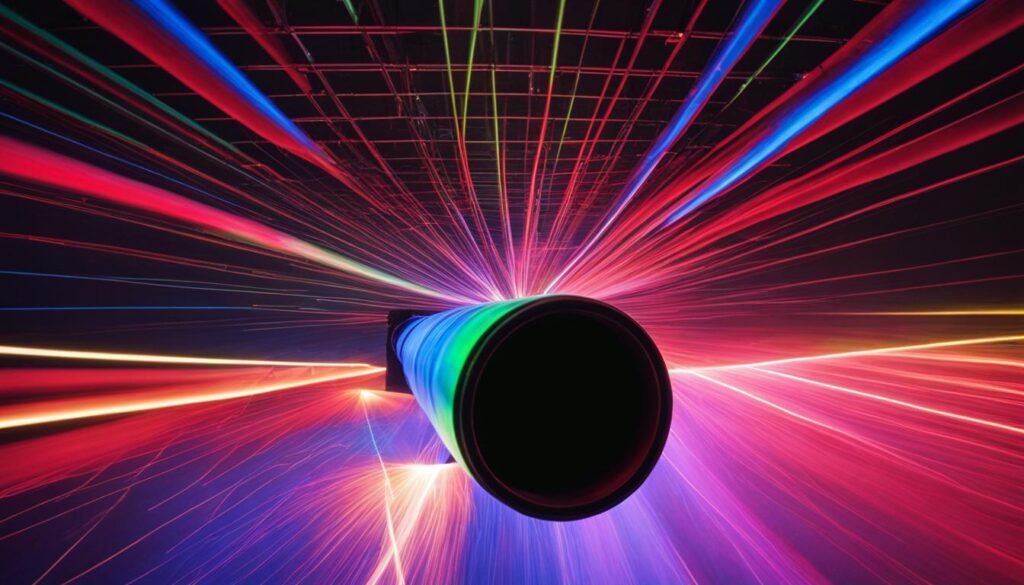Contents
- 1 The Science of Pulse Compression in Ultrafast Laser Technology
- 1.1 Introduction
- 1.2 Pulse Compression Modules
- 1.3 Hollow Core Fiber Systems
- 1.4 Dispersion Compensation Units
- 1.5 Pulse Stretcher and Compressor Fiber Bragg Gratings
- 1.6 Phase-Conjugating Cells
- 1.7 FastLas Ultra-Short Pulse Laser
- 1.8 Dispersion Management Solutions
- 1.9 Spectrally Broadening and Compression with SF-HCF
- 1.10 Conclusion

Source: APE
<>
The Science of Pulse Compression in Ultrafast Laser Technology
Introduction
Ultrafast lasers play a crucial role in various scientific and industrial applications, from material processing to microscopy. One key aspect of ultrafast laser technology is pulse compression, which allows for the generation of extremely short laser pulses with high intensity. In this blog post, we will explore the science behind pulse compression and some of the cutting-edge technologies used in this field.
Pulse Compression Modules
Pulse compression modules, such as MIKSs, are essential for spectrally broadening and temporally shortening pulses from picosecond or femtosecond lasers. These modules use nonlinear spectral broadening in multipass cells to achieve significant pulse shortening factors with high transmission rates. For example, the MIKS1_S module can shorten pulses from 200–400 fs down to <50 fs with over 90% transmission efficiency.
Hollow Core Fiber Systems
Flexible hollow core fiber systems offer versatility in pulse compression by allowing users to choose various fiber lengths and diameters to achieve desired nonlinear effects. These systems can support input energies ranging from 50 μJ to 100 mJ, offering up to 20 times compression with transmission rates exceeding 90%.
Dispersion Compensation Units
Dispersion compensation units, such as the APE femtoControl, are designed to compress femtosecond laser pulses in the spectral range of Ti:sapphire lasers. By applying the inverse amount of dispersion to the pulse, these units help achieve precise control over pulse length, making them ideal for applications like microscopy.
Pulse Stretcher and Compressor Fiber Bragg Gratings
Fiber Bragg gratings are critical components in chirped-pulse amplification systems, offering low insertion loss for high system efficiency. These gratings are used for pulse stretching and compression, enabling precise control over pulse duration and intensity.
Phase-Conjugating Cells
Phase-conjugating cells are utilized in pulse compressors to achieve high peak intensities, making them suitable for applications like material processing and laser machining. These cells play a crucial role in enhancing the performance of pulse compression systems.
FastLas Ultra-Short Pulse Laser
The FastLas system is designed to transform standard ultra-short pulse lasers into exceptional ultra-short pulse lasers with pulse durations of less than 50 fs. Equipped with a gas-filled fiber for nonlinearity management and water cooling for high-energy pulse shortening, FastLas offers efficient pulse compression solutions.
Dispersion Management Solutions
Thorlabs provides a range of dispersion management solutions, including pre-compensation modules, dispersion compensating fiber, chirped mirrors, and low GDD optics. These solutions are essential for controlling and optimizing dispersion in ultrafast laser systems, ensuring precise pulse compression.
Spectrally Broadening and Compression with SF-HCF
SAVANNA-HP by UltraFast Innovations is a pulse compressor based on stretched-flexible hollow-core fiber technology. This cutting-edge system allows for spectral broadening and compression of high-energy femtosecond pulses, providing unmatched compression capabilities for state-of-the-art ultrafast lasers.
Conclusion
Pulse compression is a fundamental aspect of ultrafast laser technology, enabling the generation of short and intense laser pulses for a wide range of applications. The advancements in pulse compression technologies discussed in this post highlight the ongoing innovation in the field of ultrafast lasers, paving the way for new possibilities in science and industry.

Source: APE
Feel free to comment your thoughts.



